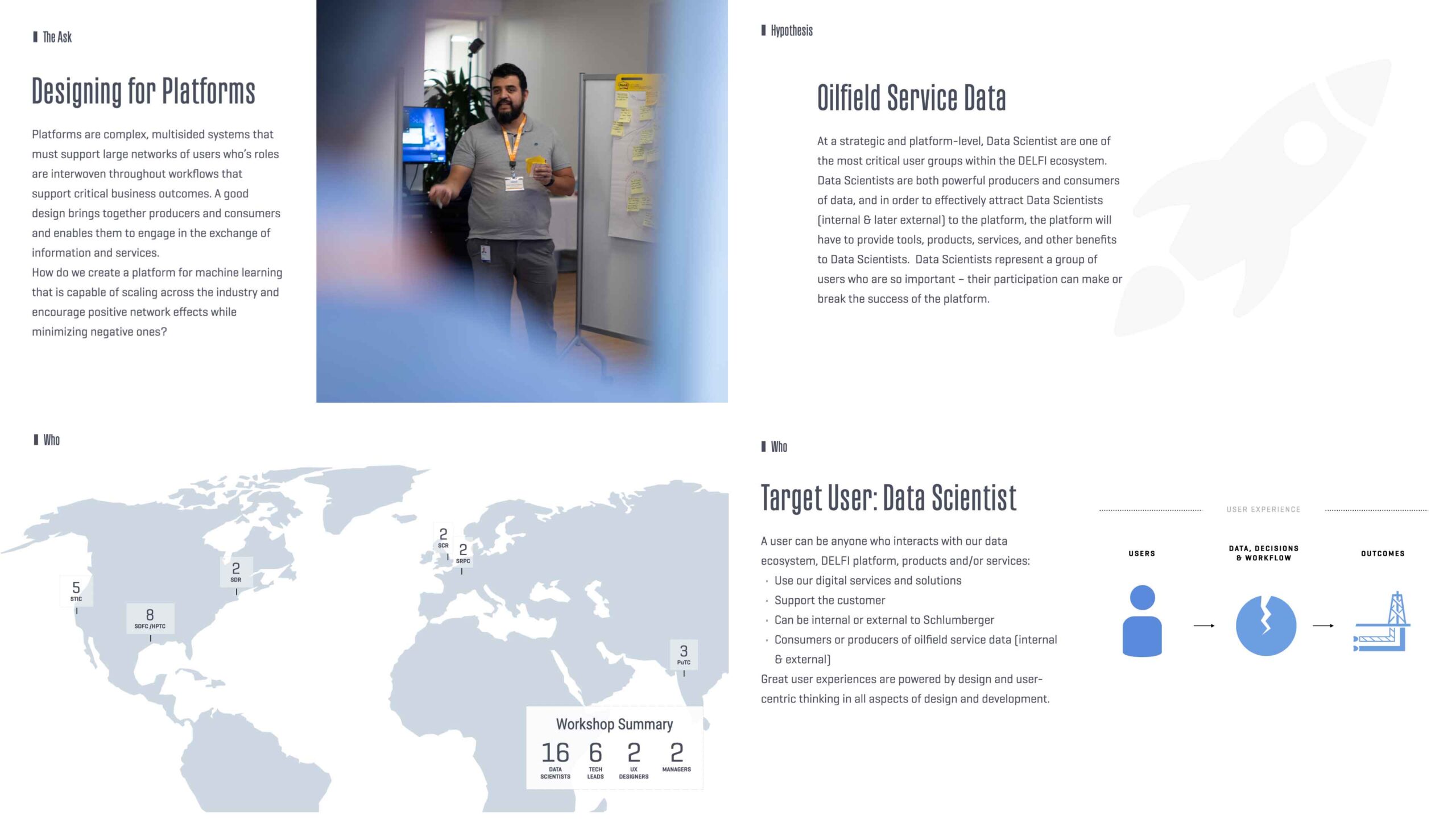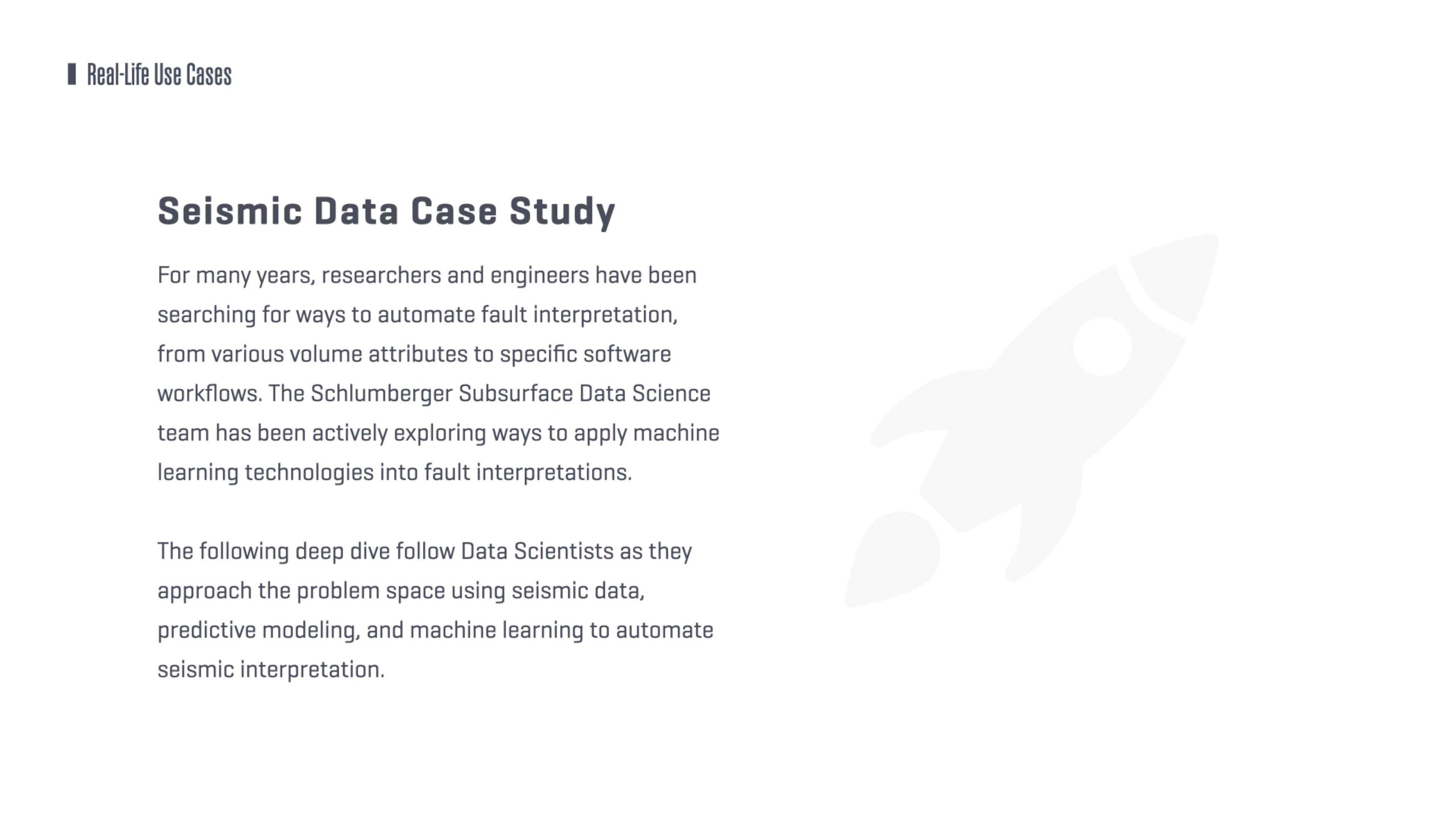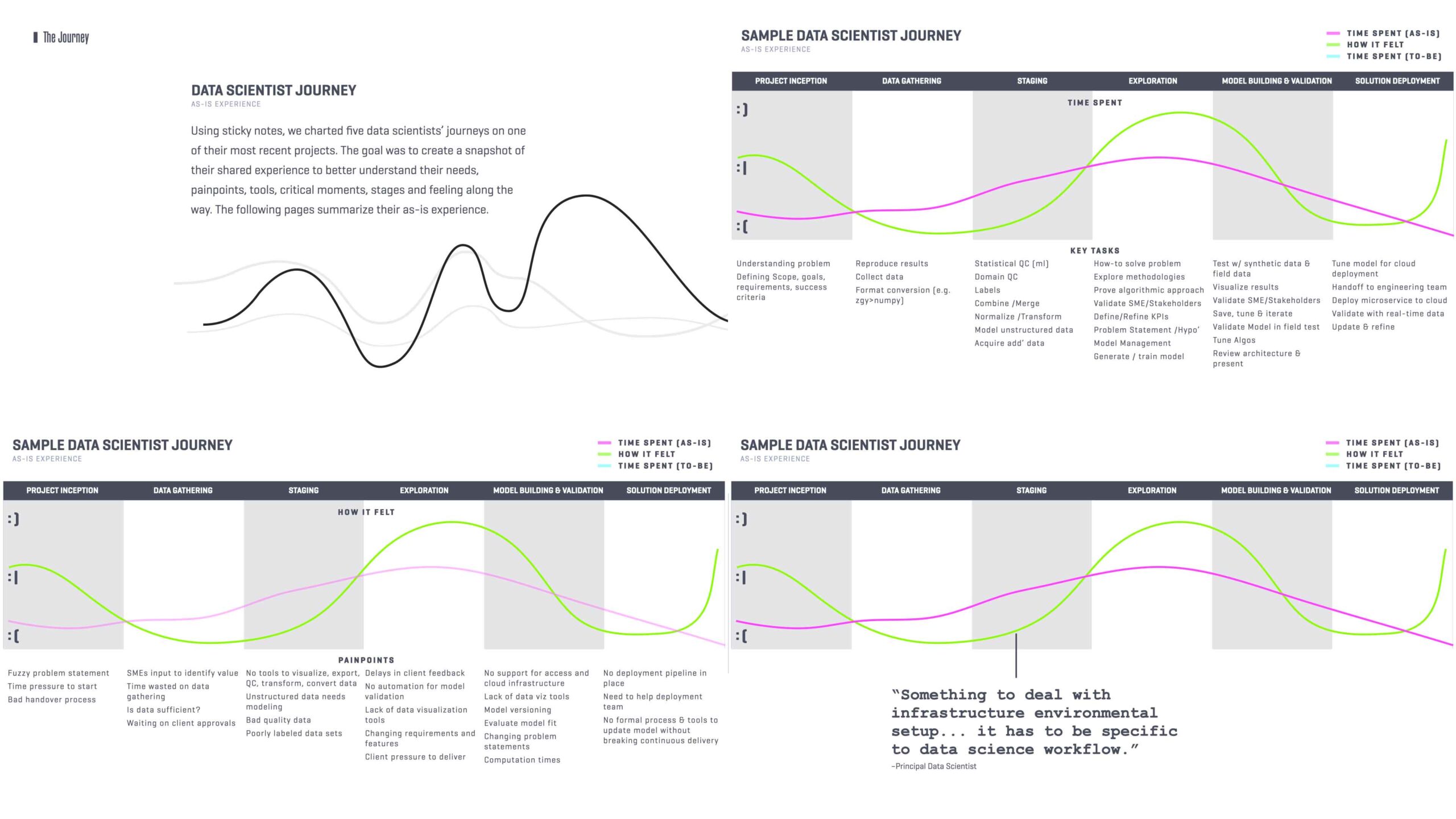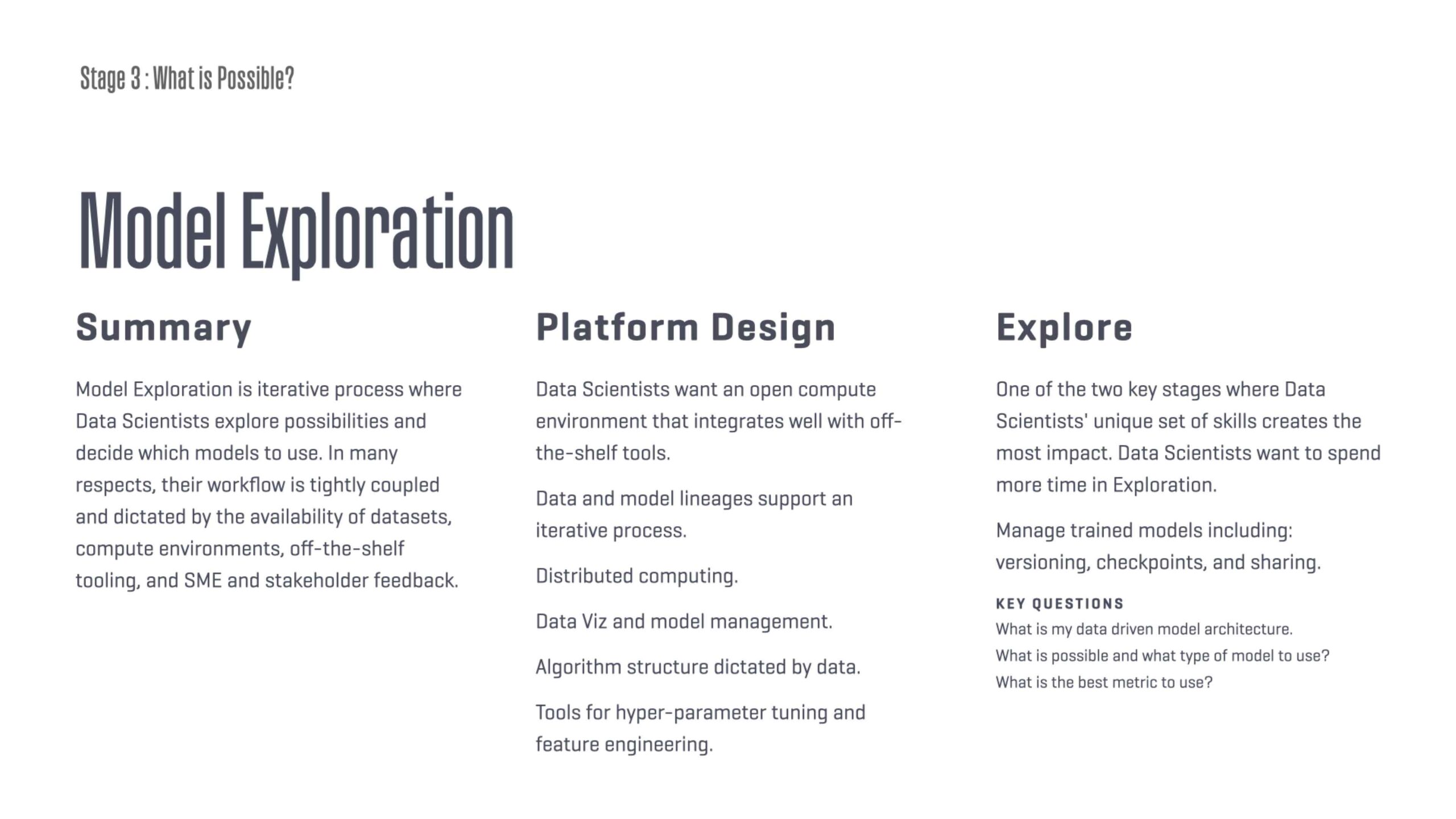Data SCience + Design
Data science

As companies continue digital transformation, many are looking for ways to supercharge their platform experiences with data science. I conducted a strategic initiative involving a brain trust of data scientists from around the globe to build a strategy for data science. The work mapped the employee experience, business opportunities, and established design principles.
Background
The opportunity to design a platform strategy for data science was huge. To prepare, I engaged the data science and machine learning community. I used surveys to crowdsource real-life use cases from within the community. I conducted deep dives with participants to understand their experiences, frame workshop activities, and design the multi-day workshop agenda. Many participants had never worked with designers before, and some were skeptics. To overcome these challenges, I had to get buy-in and foster an environment where even our most reserved participants felt comfortable sharing their experiences.

Data science experience
On day one of the workshop, I was in for a bit of a surprise. None of the participants used any internal platforms in their data science workflows. The data scientist persona, or group of users, was so critical to growth that their participation could make or break the platform. Executives spent over $100k on the design initiative to lure data scientists to their digital platforms. Executives recognized the gap and realized that "business as usual" left room for competitors to capture market share.
"The data scientist persona, or group of users, was so critical to growth that their participation could make or break the platform."
Day one was all about creating an environment where data scientists could thrive. I worked with participants to co-create key workshop goals and outcomes. The workshop brought data scientists from around the world to go through a design process together. It was essential to create an atmosphere where participants felt heard as they shared a-ha moments, experiences, and pain points. It had to be an authentic experience.


The data science experience
During day two, we mapped how data scientists spent time navigating domain-specific challenges. Participants reported time-consuming tasks such as data collection, labeling, environment administration, and tooling choices. Data scientists felt like they had to jump through hoops to access, transform, and stage data. In some cases, the employee experience resulted in turnover, or fresh grads opted to join other organizations. Participants felt tired of constantly having to reinvent the wheel.
By day three, we had defined workshop goals, navigated critical use cases, and mapped the data science experience. The latter established a baseline that identified gaps in data science workflows. We reframed the gaps to ideate and envision "sticky experiences" for data scientists. For example, data scientists saw data transformations as a compelling reason to use a digital platform. These opportunities were low-hanging fruit and later evolved into platform services. On Friday, participants jumped on flights home, and I sat in awe (and a little shaky) as I tried to wrap my head around the raw data.
Design synthesis
With a team of two, we synthesized workshop artifacts, distilled key insights, and mapped the as-is data science experience. The real-life use cases resulted in an authentic employee experience, identified pain points, and brought new opportunities to life. Next, we distilled artifacts into observations, insights, and opportunities. This crucial step became the basis for our design principles.
Product design principles are value statements that describe the most important goals that a product or service should deliver for users and are used to frame design decisions.
Next, we had to check all the boxes on the design readout to satisfy a diverse group of stakeholders. Data science leadership saw the readout as a powerful way to capture and communicate their employee experience. Much to my surprise, their leadership emphasized building a thriving data science community and connecting teams across different verticals. Then, we had to address data management, pipelines, tooling, and workflows. The report had to thread the need between an authentic employee experience and providing actionable insights.

During the workshop, we embedded solutions architects into data science teams to identify low-hanging fruit and ways to enable data science on cloud platforms. The workshop was a unique opportunity for the cloud and big data experts to immerse themselves within the problem domain. Parking lots helped engineers brainstorm solutions, identify low-hanging fruit, and rank impact. The design team used these artifacts to envision exciting possibilities, resulting in several new initiatives and features targeting data scientists.
I love to create business impact. As the readout and report took shape, I asked myself, "How can we scale this work across all platforms?" How might we enable decision-making and amplify data-enabled learnings across the organization?
Data science + design strategy
Design strategy is a compass and enabler, helping organizations find true north. Going from zero to one is rarely linear, especially when your goal is product-market fit. Instead of a linear roadmap, teams can organize around design principles to empower decision-making at every level and navigate changing markets. This level of agility is possible when teams have a shared decision-making framework that addresses the complexity of managing trade-offs.
Principles themselves are a form of leverage--they're a way to compound your understanding of situations so that you don't need to exert the same effort each time you encounter a problem.
Data science is complex. Multiplying data science across all digital platforms is soo complex that it lends itself to a principled approach. I socialized design principles with everyone, from research managers to data scientists to executives, to get feedback. Executives loved the design principles because they supported executive sponsorship and created consensus across stakeholders. Once established, design principles become a framework for decision-making and enable teams to navigate everything from core platform interactions to multi-sided networks of users to monetization.

Creating product-market fit is HARD, and teams must execute with imperfect information in dynamic product ecosystems. Design principles serve as guide rails to frame and navigate trade-offs as they arise. In today's remote world, design principles are more important than ever because of their ability to organize decision-making across all levels.
Author
Frank Noz | Senior UX Designer